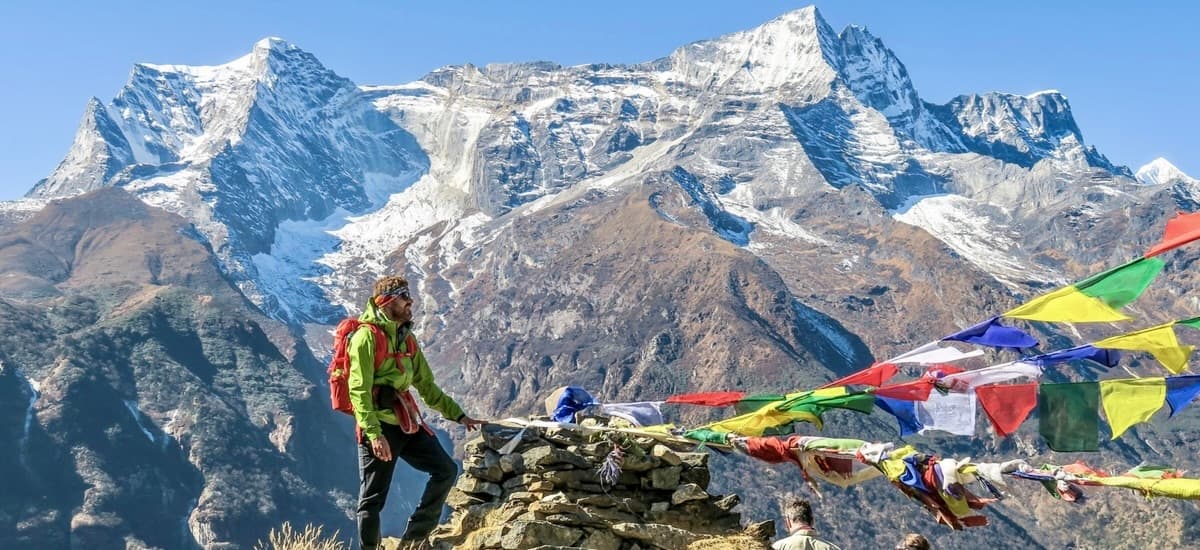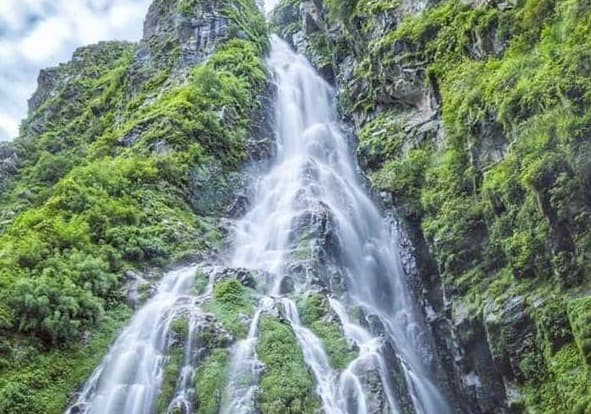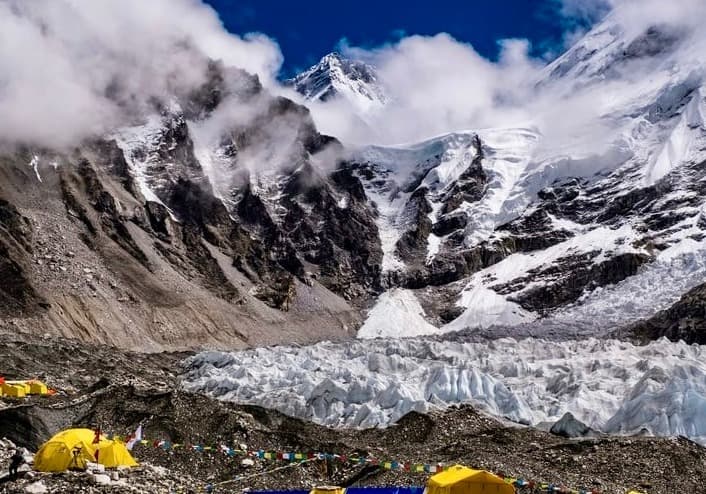Trekking Grade and difficulty on Everest Region Trekking
Trekking in the Everest region, a journey through some of the most spectacular landscapes on Earth, is an adventure many dreams of. The grades and difficulties of these treks are crucial for a safe and enjoyable experience. The Everest region offers a variety of treks, ranging from moderate to extremely challenging, each with its unique characteristics and challenges. Factors such as altitude, terrain, and weather play a significant role in determining the difficulty level. Trekkers face challenges like steep climbs, rugged trails, and the risk of altitude sickness due to the high elevations reached during these treks. Despite these challenges, the stunning views of the Himalayan peaks, the unique Sherpa culture, and the sense of accomplishment make trekking in the Everest region a once-in-a-lifetime experience. Whether it's the classic Everest Base Camp trek, the serene Gokyo Ri trek, or the demanding Three Passes trek, each offers an adventure that requires careful planning, physical preparation, and an understanding of the demands of high-altitude trekking.
We consider ourselves the better choice for those adventurous souls eager to discover the wonders of the Everest region. Our deep understanding of the trekking grades and the unique challenges posed by the Everest treks sets us apart. We meticulously design our itineraries to align with the varying abilities and expectations of our clients, ensuring a safe, enjoyable, and unforgettable experience. From the classic Everest Base Camp Trek to the serene Gokyo Ri and the demanding Three Passes Trek, we offer a comprehensive range of options catered to different fitness levels and adventure desires. Our expert guides, well-versed in high-altitude trekking, provide invaluable insights and support, ensuring a journey that is as rewarding as it is challenging. With Luxury Holidays Nepal, trekkers can confidently embark on their Himalayan adventure, knowing they are in the hands of a trusted and experienced team dedicated to delivering the best trekking experiences in the Everest region.
Everest Base Camp Trek Difficulty
The Everest Base Camp Trek, renowned as one of the most iconic treks in the world, offers a unique blend of breathtaking scenery, challenging terrain, and cultural immersion. The difficulty level of this trek is often classified as moderate to difficult, largely due to several key factors:
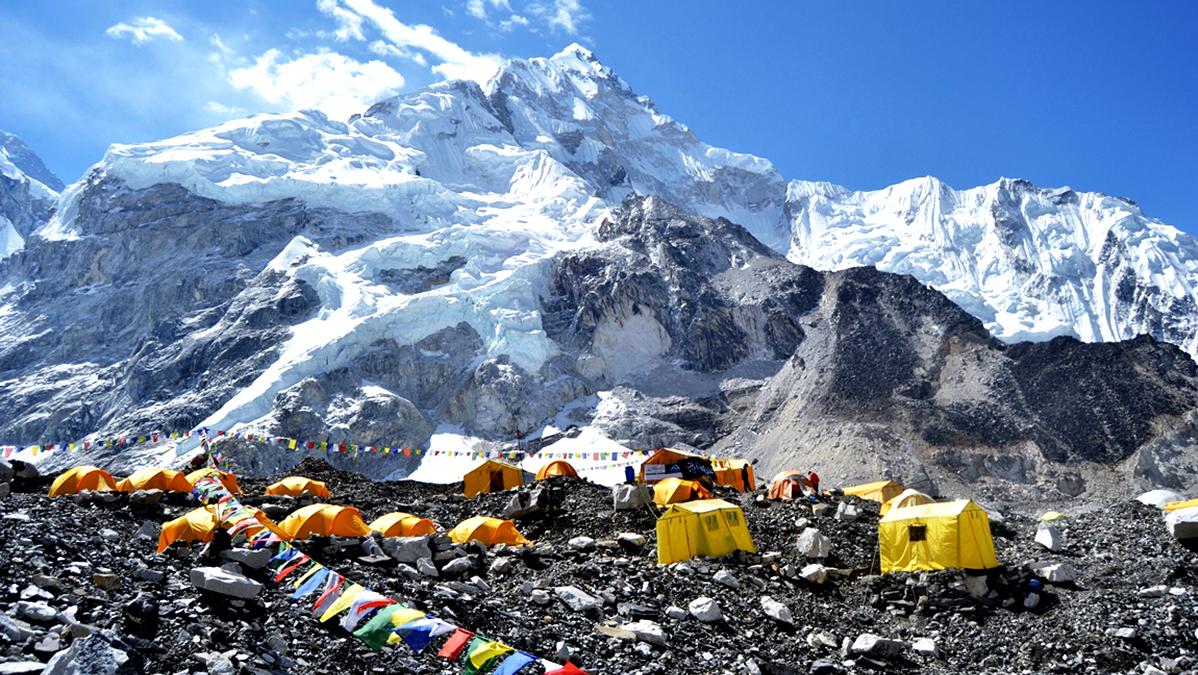
-
Altitude: Reaching a maximum height of 5,364 meters (17,598 feet) at Everest Base Camp, the trek involves significant elevation gain. High altitude not only challenges the body physically but also increases the risk of altitude sickness.
-
Terrain: The trekking route includes steep ascents and descents, uneven and rocky paths, and sometimes traversing glaciers and moraines. The terrain can be demanding, requiring good balance and careful footing.
-
Distance and Duration: The typical Everest Base Camp Trek covers approximately 130 kilometers and spans 12 to 14 days, including acclimatization days. This requires trekkers to walk for an average of 5 to 8 hours per day, which can be physically taxing, especially for those not accustomed to long-distance hiking.
-
Weather Conditions: The weather in the Himalayas can be unpredictable and can change rapidly. Trekkers may face challenges such as cold temperatures, wind, and snow, especially at higher altitudes.
-
Physical Fitness and Preparation: While you don’t need to be an elite athlete, a good level of physical fitness is required. Preparation should include cardiovascular training, strength training, and hiking experience.
Despite these challenges, the Everest Base Camp Trek is achievable for most people with adequate preparation and determination. It's crucial to acclimatize properly, stay hydrated, and listen to your body throughout the trek. The rewards of this trek are immense, offering stunning views of some of the highest peaks in the world, unique cultural insights into the lives of the Sherpa community, and an unforgettable sense of accomplishment.
Trekking Grades in the Everest Region
In the Everest region, trekking grades vary significantly, catering to a wide range of trekkers with different experience levels and physical capabilities. Understanding these grades is essential for choosing the right trek and preparing adequately. Here's a breakdown of the Trekking Grades in the Everest Region:
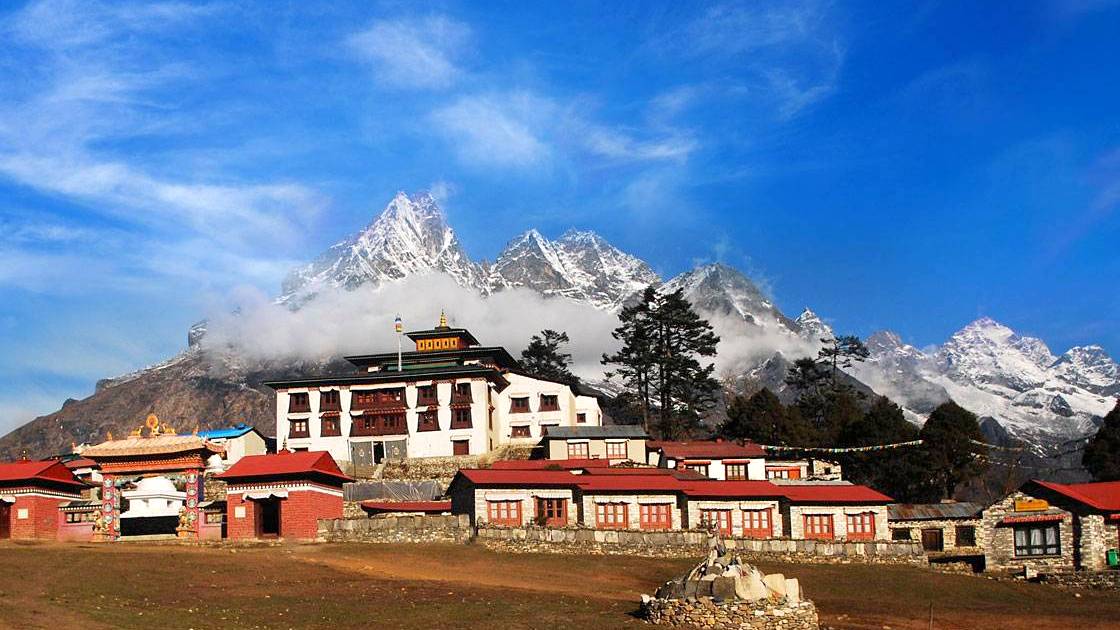
Tengboche Monastery
-
Easy: These treks are suitable for beginners and those looking for a less strenuous experience. They typically involve walking for a few hours each day on well-established trails at lower altitudes. An example is the Everest Panorama Trek, which offers stunning views without the challenge of high altitudes.
-
Moderate: Moderate treks are ideal for those with some trekking experience and good physical fitness. These treks often involve longer walking days, steeper climbs, and higher altitudes, though they usually don't exceed 5,000 meters. The Gokyo Ri Trek is a good example, offering a blend of beautiful scenery and a moderate challenge.
-
Challenging/Strenuous: These treks are meant for more experienced trekkers who have good physical fitness and stamina. They involve long walking days, often in remote areas with steep ascents and descents, and high altitudes. The classic Everest Base Camp Trek falls into this category.
-
Very Strenuous: These treks are for the seasoned trekker. They involve crossing high passes, enduring extreme weather conditions, and navigating difficult terrains. One example is the Everest Three Passes Trek, which is one of the most challenging treks in the region.
It's important to assess your fitness level and trekking experience before choosing a trek in the Everest region. Each grade brings its own challenges and rewards, and selecting the right one can make your trekking experience both enjoyable and safe. Proper preparation, acclimatization, and a clear understanding of the demands of your chosen trek are key to a successful and memorable adventure in the Himalayas.
Everest Trek Altitude Sickness
Everest Trek Altitude Sickness is a significant concern for trekkers exploring the high altitudes of the Everest region. Altitude sickness, also known as Acute Mountain Sickness (AMS), occurs when the body fails to acclimatize to the lower oxygen levels at high elevations. This condition can affect anyone, regardless of fitness level or experience, and becomes a risk at elevations above 2,500 meters (8,200 feet).
Symptoms of Altitude Sickness
- Mild Symptoms: Headache, dizziness, fatigue, shortness of breath, loss of appetite, and disturbed sleep are common initial signs.
- Severe Symptoms: More serious symptoms include persistent cough, inability to walk in a straight line, and a bluish discoloration of the skin (cyanosis).
Prevention and Management
- Acclimatization: The key to preventing altitude sickness is to ascend gradually, allowing your body time to adapt to the altitude. This means including rest days in your trekking itinerary.
- Hydration: Staying well-hydrated is crucial. Drink plenty of water throughout the trek.
- Avoid Alcohol and Smoking: Alcohol and tobacco can exacerbate the effects of altitude sickness and should be avoided.
- Eat a Balanced Diet: A balanced diet rich in carbohydrates can help the body acclimatize.
- Listen to Your Body: If you start to feel the symptoms of altitude sickness, it's important to stop ascending and rest. If symptoms worsen, descending is the most effective treatment.
- Medication: Medications like Acetazolamide can be used for prevention and treatment, but should only be taken under medical advice.
Severity and Treatment
- If not addressed, altitude sickness can progress to more severe conditions like High Altitude Pulmonary Edema (HAPE) or High Altitude Cerebral Edema (HACE), both of which are life-threatening. Immediate descent and medical attention are necessary if severe symptoms develop.
Understanding and respecting the risks associated with high altitude is essential for a safe trek in the Everest region. By taking the right precautions and planning for gradual acclimatization, trekkers can significantly reduce the risk of altitude sickness and enjoy their journey to one of the most breathtaking regions on Earth.
Everest Three Passes Trek Difficulty
The Everest Three Passes Trek is renowned as one of the most challenging and adventurous treks in the Everest region. This trek involves crossing three high mountain passes, each over 5,000 meters (16,400 feet), and provides an incredibly comprehensive journey through the Everest area. The difficulty of this trek is due to several factors:
-
High Altitude Passes: The trek includes crossing Kongma La (5,535 meters), Cho La (5,420 meters), and Renjo La (5,360 meters). These high passes demand excellent physical fitness, acclimatization, and endurance.
-
Length and Duration: The trek typically takes around 18 to 21 days, covering a significant distance. This extended duration at high altitude and the long daily walking hours add to the trek's difficulty.
-
Terrain: The path involves steep ascents and descents on rugged trails, often in remote areas. The terrain can include icy and snowy paths, especially near the passes, requiring careful navigation and trekking experience.
-
Weather Conditions: Weather in the high Himalayas can be unpredictable and harsh, with extreme cold, strong winds, and snowfall, adding to the challenge.
-
Remote Nature: Parts of the trek are in more remote areas of the Everest region, where amenities are basic, and access to emergency services is limited.
-
Physical and Mental Preparation: Due to the strenuous nature of the trek, a high level of physical fitness, mental endurance, and prior trekking experience at high altitudes are crucial.
Despite its challenges, the Everest Three Passes Trek is immensely rewarding, offering unparalleled views of the Himalayas, including several 8,000-meter peaks, unique cultural experiences, and a sense of unparalleled accomplishment. It is an ideal choice for seasoned trekkers seeking an ultimate high-altitude trekking adventure. Proper preparation, including physical conditioning, acclimatization, and having a knowledgeable guide, is essential for a safe and enjoyable experience on this demanding trek.
Gokyo Ri Trek Grade
The Gokyo Ri Trek Grade is generally considered moderate to challenging, offering a fantastic alternative to the more frequented Everest Base Camp Trek. This trek is particularly known for its stunning natural beauty, including the turquoise Gokyo Lakes and the panoramic views from Gokyo Ri itself. Here's an overview of what makes the Gokyo Ri Trek a moderate to challenging adventure:
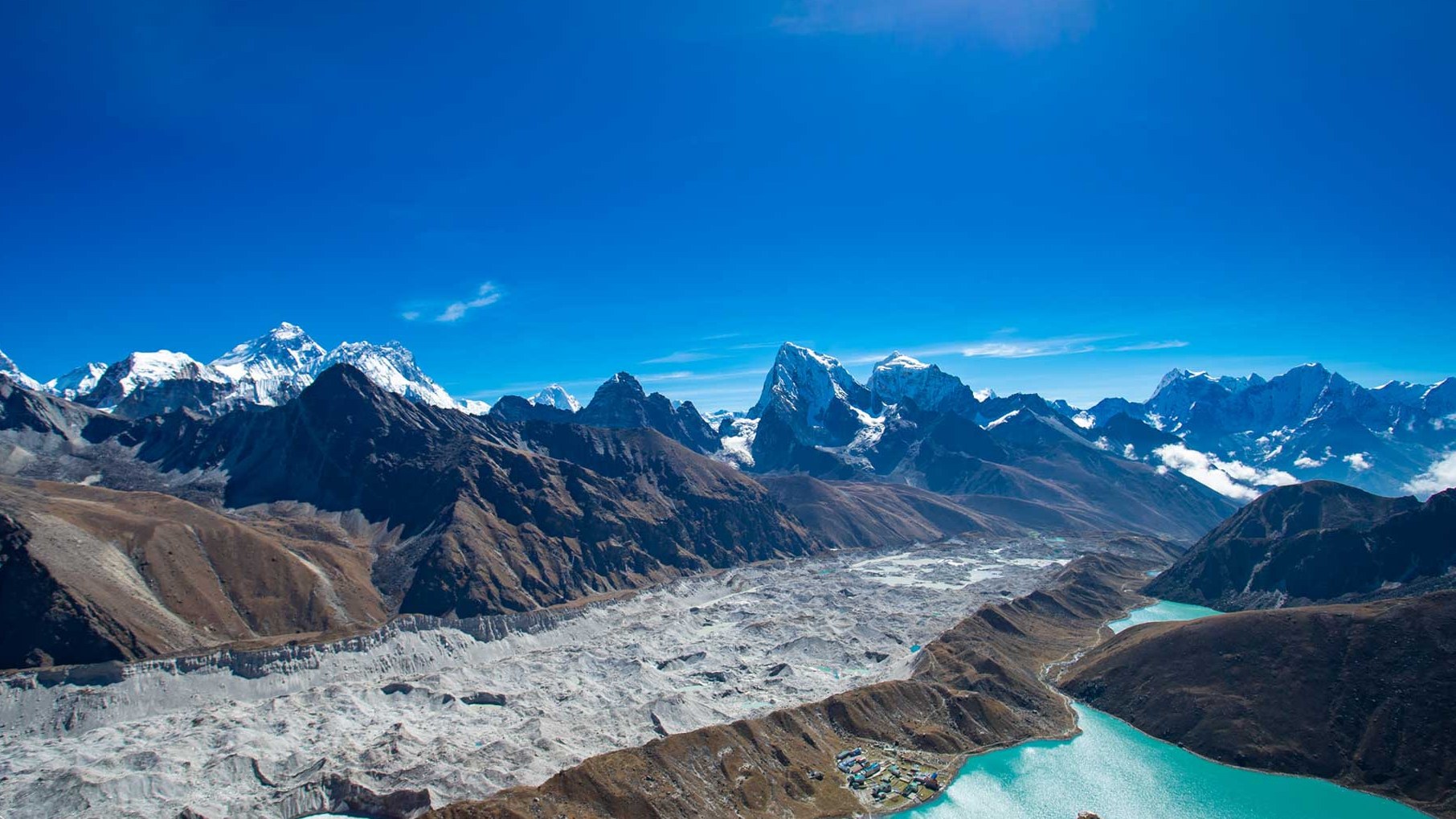
Gokyo Lake
-
Altitude: One of the primary challenges of the Gokyo Ri Trek is the altitude. The trek reaches its highest point at Gokyo Ri, standing at 5,357 meters (17,575 feet). The high altitude demands proper acclimatization to avoid altitude sickness.
-
Terrain: The trek involves navigating through rugged and steep trails, crossing glaciers, and potentially dealing with snow, especially at higher elevations. The terrain can be challenging and requires good physical condition and stamina.
-
Duration and Distance: The trek usually spans about 12 to 14 days, covering a considerable distance. This requires sustained physical effort over a prolonged period, with daily walking times averaging 5 to 7 hours.
-
Weather Conditions: As with any high-altitude trek in the Himalayas, weather can be unpredictable. Trekkers need to be prepared for cold temperatures and sudden weather changes, which can add to the trek's difficulty.
-
Physical Fitness: A good level of physical fitness is required for the Gokyo Ri Trek. While it may not demand technical climbing skills, endurance, strength, and prior trekking experience are beneficial.
-
Remoteness: The Gokyo Valley is more remote compared to the Everest Base Camp route. While this offers a more solitary experience, it also means fewer amenities and potentially more challenging logistics in case of emergencies.
Despite its challenges, the Gokyo Ri Trek is immensely rewarding. It offers breathtaking views of some of the highest peaks in the world, including Everest, Lhotse, Makalu, and Cho Oyu, from Gokyo Ri. The trek also takes you through beautiful Sherpa villages and past the stunning Gokyo Lakes, offering both cultural insights and natural wonders. With the right preparation, the Gokyo Ri Trek can be an extraordinary experience for those looking to explore the beauty of the Everest region.
Best Time for Everest Trek
The Best Time for Everest Trek is crucial for a successful and enjoyable experience in the Everest region. The ideal times to undertake these treks are during the pre-monsoon (spring) and post-monsoon (autumn) seasons, each offering unique advantages:

Pre-Monsoon (Spring) - March to May
- Weather: This period experiences warmer weather, making daytime trekking more comfortable.
- Visibility: The skies are generally clear, offering excellent views of the Himalayan range.
- Flora: The lower altitudes are often in bloom with rhododendrons and other flowers, adding to the scenic beauty.
- Crowds: This is a peak season, so trails can be quite busy, especially the closer you get to Everest Base Camp.
Post-Monsoon (Autumn) - September to November
- Weather: Autumn brings stable weather with clear skies and less precipitation.
- Visibility: Offers some of the clearest views of the mountains, ideal for photographers.
- Temperature: Days are comfortably cool, and nights, while colder, are manageable.
- Crowds: Similar to spring, autumn is a popular time, so expect the trails and teahouses to be relatively busy.
Other Considerations
- Winter (December to February): Trekking in winter is possible but challenging due to cold temperatures, snow, and shorter days. However, it's less crowded, offering a more solitary experience.
- Summer/Monsoon (June to August): Not recommended due to heavy rains, muddy and slippery trails, and possible leeches. Views are often obscured by clouds and fog.
Selecting the right time for an Everest trek depends on personal preferences regarding weather, temperature, visibility, and crowd levels. Both spring and autumn provide excellent conditions, but it's important to be well-prepared with appropriate gear for the cooler nights and higher altitudes. Regardless of the season, the Everest region offers an unforgettable trekking experience with its stunning landscapes and rich cultural insights.
Everest Trekking Routes
Exploring the Everest Trekking Routes offers a diverse range of experiences, each varying in difficulty, scenery, and duration. The Everest region is not just about the famous Base Camp; it encompasses multiple paths, each leading to unique destinations and adventures. Here's an overview of some of the key trekking routes in the Everest region:
Everest Base Camp Trek
- The most iconic route, leading to the foot of the world's highest mountain.
- Involves a challenging trek through beautiful Sherpa villages, glacial moraines, and high-altitude landscapes.
- Usually takes about 12 to 14 days, to reach a maximum altitude of 5,364 meters at Base Camp.
Gokyo Lakes Trek
- An alternative to the classic Base Camp Trek, focusing on the stunning Gokyo Valley and its emerald lakes.
- Includes climbing Gokyo Ri (5,357 meters) for spectacular views of Everest.
- Typically a 14 to 16-day trek, is considered moderate to challenging.
Everest Three Passes Trek
- One of the most comprehensive and challenging treks, covering three high passes - Kongma La, Cho La, and Renjo La.
- Offers an extensive exploration of the region, including Everest Base Camp and Gokyo Lakes.
- Requires around 18 to 21 days, suitable for experienced trekkers.
Everest Panorama Trek
- A shorter and less challenging option, ideal for those with limited time or seeking a less strenuous trek.
- Offers beautiful views of Everest and the surrounding peaks.
- Typically a 7 to 10-day trek, reaching up to 3,860 meters at Tengboche Monastery.
Island Peak Climbing with Everest Base Camp
- A combination of trekking and mountaineering, leading to Everest Base Camp and the summit of Island Peak.
- Demands good physical fitness and some mountaineering experience.
- Usually takes about 20 days, combining trekking with a climbing expedition.
Ama Dablam Base Camp Trek
- A less crowded route offering stunning views of Ama Dablam and other peaks.
- Includes a visit to the Ama Dablam Base Camp, providing a unique perspective of the Himalayas.
- Around 12 days long, suitable for those looking for a moderately challenging trek.
Each of these routes offers a unique perspective of the Everest region, catering to a wide range of preferences and abilities. Whether seeking the challenge of high-altitude treks or the cultural insights of Sherpa villages, the Everest region has something for every trekker. Proper preparation, choosing the right route that matches your fitness and experience level, and respecting the local culture and environment is key to a fulfilling trekking experience in this magnificent part of the Himalayas.
Physical Preparation for Everest Trek
Physical preparation is a critical aspect of successfully undertaking a trek in the Everest region. The challenges posed by high altitude, rugged terrain, and extended trekking days demand a good level of physical fitness. Here’s a guide to Physical Preparation for Everest Trek:
-
Cardiovascular Endurance: Focus on building cardiovascular fitness through activities like running, cycling, swimming, or brisk walking. This training helps improve stamina and lung capacity, which are crucial for trekking in high altitudes.
-
Strength Training: Strong legs are essential for trekking. Incorporate exercises like squats, lunges, leg presses, and calf raises into your routine. Also, work on your core strength and upper body, as you'll be carrying a backpack.
-
Hiking Practice: If possible, engage in regular hiking, especially on varied terrains. Practice with the backpack you intend to use for the trek, gradually increasing the weight to what you expect to carry. This not only builds strength but also helps you get accustomed to long-duration walks.
-
Altitude Training: While it's not always possible to train at high altitudes, you can simulate the conditions to some extent. If you have access to high-altitude training facilities or can spend time at higher elevations before your trek, it can be beneficial.
-
Flexibility Exercises: Regular stretching or yoga can improve flexibility, which helps prevent injuries during the trek.
-
Mental Preparation: Endurance trekking is as much a mental challenge as a physical one. Engage in activities that enhance your mental toughness, like meditation or practicing trekking in adverse weather conditions.
-
Nutrition and Hydration: Adopt a balanced diet rich in proteins, carbohydrates, vitamins, and minerals. Proper hydration is also crucial, so develop a habit of drinking plenty of water.
-
Acclimatization Walks: If your schedule allows, try to include short treks or walks at higher altitudes before the main trek to help your body acclimate to higher elevations.
-
Consult with a Professional: Before starting a training regime, especially if you have any health concerns, it’s wise to consult with a fitness trainer or a medical professional.
-
Rest and Recovery: Ensure your training plan includes adequate rest days for recovery. Overtraining can lead to injuries and fatigue.
Physical preparation for an Everest trek should ideally start at least a few months before your trekking date. This gradual build-up in fitness level ensures that your body is well-prepared for the demands of high-altitude trekking, making your experience more enjoyable and safe.
Acclimatization in Everest Treks
Acclimatization in Everest Treks is a critical factor in ensuring a safe and enjoyable trekking experience. Due to the high altitudes reached in these treks, acclimatization becomes essential to prevent altitude sickness, which can be life-threatening if not managed properly. Here are key aspects of acclimatization for treks in the Everest region:
-
Understanding Acclimatization: Acclimatization is the process by which the body adjusts to lower oxygen levels at higher elevations. It involves gradually ascending to allow the body time to adapt to the altitude.
-
Slow and Steady Ascent: It’s crucial to ascend slowly to higher altitudes. A general rule is not to increase the sleeping altitude by more than 300 to 500 meters per day once above 3,000 meters.
-
Rest Days for Acclimatization: Most itineraries in the Everest region include acclimatization days, where you either rest at the same altitude or do a short, higher climb and then return to a lower altitude to sleep. This practice, often summarized as “climb high, sleep low,” is essential for acclimatization.
-
Recognize Symptoms of Altitude Sickness: Be aware of the symptoms of altitude sickness, which include headache, nausea, dizziness, and fatigue. If symptoms occur, it’s important to stop ascending and rest. If symptoms worsen, you should descend to a lower altitude.
-
Stay Hydrated and Eat Well: Dehydration can exacerbate altitude sickness, so drink plenty of water. Eating a balanced diet also helps the body acclimate.
-
Avoid Alcohol and Smoking: Both can interfere with acclimatization and exacerbate altitude sickness symptoms.
-
Listen to Your Body: Pay attention to how you are feeling. Everyone acclimatizes differently, so don’t compare your progress with others.
-
Medications: In some cases, medication like Acetazolamide (Diamox) can be used to aid acclimatization. However, it should be used under medical advice and is not a substitute for a proper acclimatization schedule.
-
Have a Flexible Itinerary: Be prepared to adjust your itinerary if needed. The key to safe acclimatization is not to rush and give your body the time it needs to adjust.
-
Guided Treks: Having an experienced guide can be invaluable. They can monitor your condition and make necessary decisions regarding acclimatization and altitude sickness management.
Proper acclimatization is the cornerstone of any successful high-altitude trek. It not only maximizes the chances of reaching your trekking goal, whether that's Everest Base Camp, Gokyo Ri, or crossing the high passes but also ensures that you enjoy the journey in a safe and healthy way.
Everest Trekking Permits
For trekking in the Everest region, obtaining the necessary Everest Trekking Permits is a mandatory and crucial step. The permits are required to ensure the protection and maintenance of the region's trails and environment and to support local community development. Here’s a guide to the permits needed for Everest treks:
TIMS Card (Trekkers' Information Management System)
- Required for all trekkers in Nepal.
- Helps in monitoring and managing trekkers’ records for safety purposes.
- Can be obtained in Kathmandu or Pokhara.
Sagarmatha National Park Entry Permit
- This permit is specifically for entering the Sagarmatha National Park, where Mount Everest and several other high peaks are located.
- The permit is used for environmental conservation efforts within the park.
- Available at the Nepal Tourism Board office in Kathmandu or at the Monjo Park entrance.
Khumbu Pasang Lhamu Rural Municipality Entrance Permit
- Replaces the need for the TIMS Card if you're trekking exclusively in the Everest region.
- This permit fee goes directly to the local government of the Khumbu region for local development and maintenance projects.
- It can be obtained at Lukla or Monjo.
Important Points to Note
- No Individual Trekking Permits: The Everest region does not require a special individual trekking permit (unlike some controlled regions in Nepal).
- Costs: The cost of these permits can vary. It’s advisable to check the latest fee structure before planning your trek.
- Documentation: To obtain these permits, you'll need to provide personal information, travel insurance details, and passport photocopies.
It’s important to have these permits in order as part of your trek preparation, as they will be checked at various checkpoints along the trekking routes. The permits not only ensure legal compliance but also contribute to the sustainable management of one of the world's most iconic trekking destinations.
Luxury Everest Region Trekking
Luxury Everest Region Trekking combines the adventure of high-altitude trekking with the comfort and exclusivity of luxury travel. This experience caters to those who wish to explore the majestic Everest region without forgoing the comforts and amenities they are accustomed to. Here’s what you can expect with a luxury trek in the Everest region:
-
Premium Accommodations: Instead of the standard teahouses, luxury treks typically involve stays in high-end lodges or luxury-tented camps. These accommodations offer superior comfort, including amenities like comfortable beds, en-suite bathrooms, and often, heating and electricity.
-
Gourmet Dining: Luxury treks provide a superior culinary experience, with a range of meal options that might include both local and international cuisine, prepared by skilled chefs. The focus is on quality, nutrition, and catering to dietary preferences and restrictions.
-
Smaller Group Sizes: Luxury treks are often characterized by smaller group sizes, ensuring personalized attention and a more intimate experience of the Himalayas.
-
Enhanced Transportation Options: This could include helicopter transfers to skip the more challenging parts of the trek or to reach the starting point of the trek (like Lukla) more comfortably and quickly.
-
Experienced Guides and Porters: High-quality, experienced guides with extensive knowledge of the region, culture, and environment accompany you. Porters or yaks to carry luggage are usually part of the package, ensuring you trek comfortably with just a day pack.
-
Comprehensive Support: Luxury treks often come with a higher level of support, including detailed pre-trek briefings, customized training recommendations, and more flexible itineraries.
-
Safety and Security: High-end treks place a strong emphasis on safety, with comprehensive risk assessments and emergency procedures in place, including immediate helicopter evacuation if needed.
-
Cultural Immersion: Luxury treks do not compromise on the cultural aspect, offering guided village tours, monastery visits, and interactions with local communities.
-
Environmental and Social Responsibility: Many luxury trek operators are committed to sustainable practices and support local conservation and community projects.
Luxury Everest Region Trekking is an exquisite blend of adventure and comfort, offering a unique way to experience one of the world's most spectacular trekking destinations. This type of trek is perfect for those who want to experience the beauty and challenge of the Himalayas while enjoying a higher level of comfort and service.
The Trekking Grade and Difficulty in Everest Region Trekking is crucial for a safe and fulfilling adventure. Whether it's the classic Everest Base Camp Trek, the serene Gokyo Ri Trek, or the challenging Everest Three Passes Trek, each trail offers unique experiences and challenges. Key factors such as altitude, terrain, weather conditions, and physical preparation play a significant role in determining the difficulty of these treks. Adequate acclimatization, awareness of altitude sickness, and obtaining necessary permits are essential. By choosing the right trek that aligns with your fitness level and experience, and with proper preparation, trekkers can safely enjoy the breathtaking beauty and cultural richness of the Everest region.
Frequently Asked Questions for Trekking Grade and Difficulty on Everest Region Trekking
Q: What are the trekking grades in the Everest region?
A: Trekking grades range from easy to very strenuous. Easy treks involve short daily distances on well-established paths. Moderate treks may include longer distances and higher altitudes. Strenuous and very strenuous treks involve difficult terrain, high passes, and extreme weather, requiring excellent physical fitness and trekking experience.
Q: How difficult is the Everest Base Camp Trek?
A: The Everest Base Camp Trek is generally considered challenging. It involves long trekking days, high altitudes (up to 5,364 meters), and potentially harsh weather conditions. Good physical fitness and proper acclimatization are essential.
Q: What is the risk of altitude sickness in the Everest region?
A: The risk of altitude sickness is significant due to the high elevations reached during the treks. Symptoms include headache, nausea, and shortness of breath. Proper acclimatization and ascending gradually are key to prevention.
Q: Is the Everest Three Passes Trek more difficult than the Base Camp Trek?
A: Yes, the Everest Three Passes Trek is more challenging. It includes crossing three high passes over 5,000 meters, longer trekking durations, and more remote and rugged terrain.
Q: What is the best time to trek in the Everest region?
A: The best times are during the pre-monsoon (spring, March to May) and post-monsoon (autumn, September to November) seasons, due to more stable weather and clearer skies.
Q: Are there different routes for Everest treks, and how do they vary in difficulty?
A: Yes, there are several routes, such as the classic Everest Base Camp Trek, the Gokyo Ri Trek, and the Everest Panorama Trek. They vary in difficulty, duration, and scenery, with some offering more challenging paths than others.
Q: How should I prepare physically for an Everest trek?
A: Physical preparation should include cardiovascular exercises, strength training, and hiking practice. Building endurance and acclimatizing to altitude is also crucial.
Q: What is the importance of acclimatization in these treks?
Acclimatization is vital to avoid altitude sickness. This involves gradual ascent and spending several days at moderate altitudes to adjust to the decreased oxygen levels.
Q: Do I need any permits for Everest region trekking?
A: Yes, trekkers need a TIMS card, a Sagarmatha National Park permit, and a Khumbu Pasang Lhamu Rural Municipality entrance permit.
Q: Can beginners attempt treks in the Everest region?
A: Yes, beginners can undertake certain treks like the Everest Panorama Trek, which are less strenuous. However, good health and basic fitness are advisable, even for easier treks.
If you need any further information, please contact us by email: at [email protected], Phone: at +977- 985 100 5129 (WhatsApp)
#Tags
Tripadvisor
5.0910 reviewsGoogle
4.8110 reviewsFacebook
4.1 recommend44 ReviewsTrustpilot
4.1 Great(5 reviews)- Trusted by50K plus traveller

